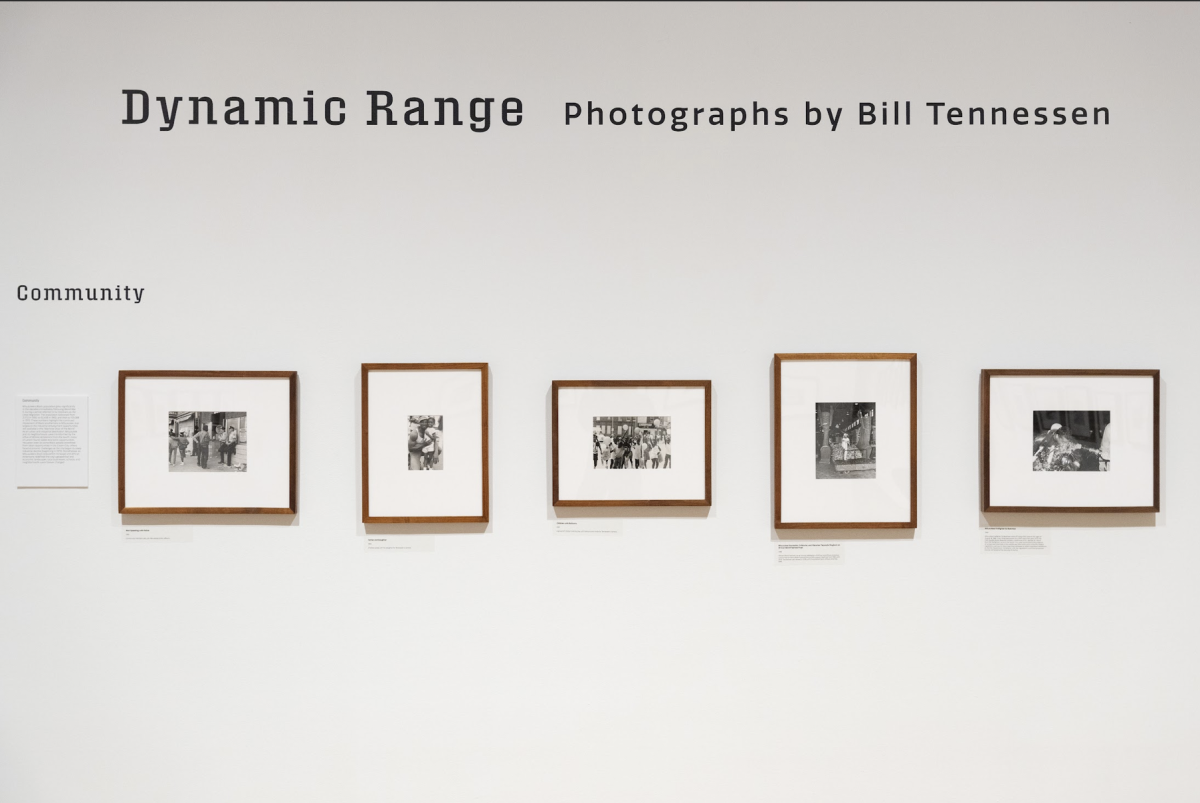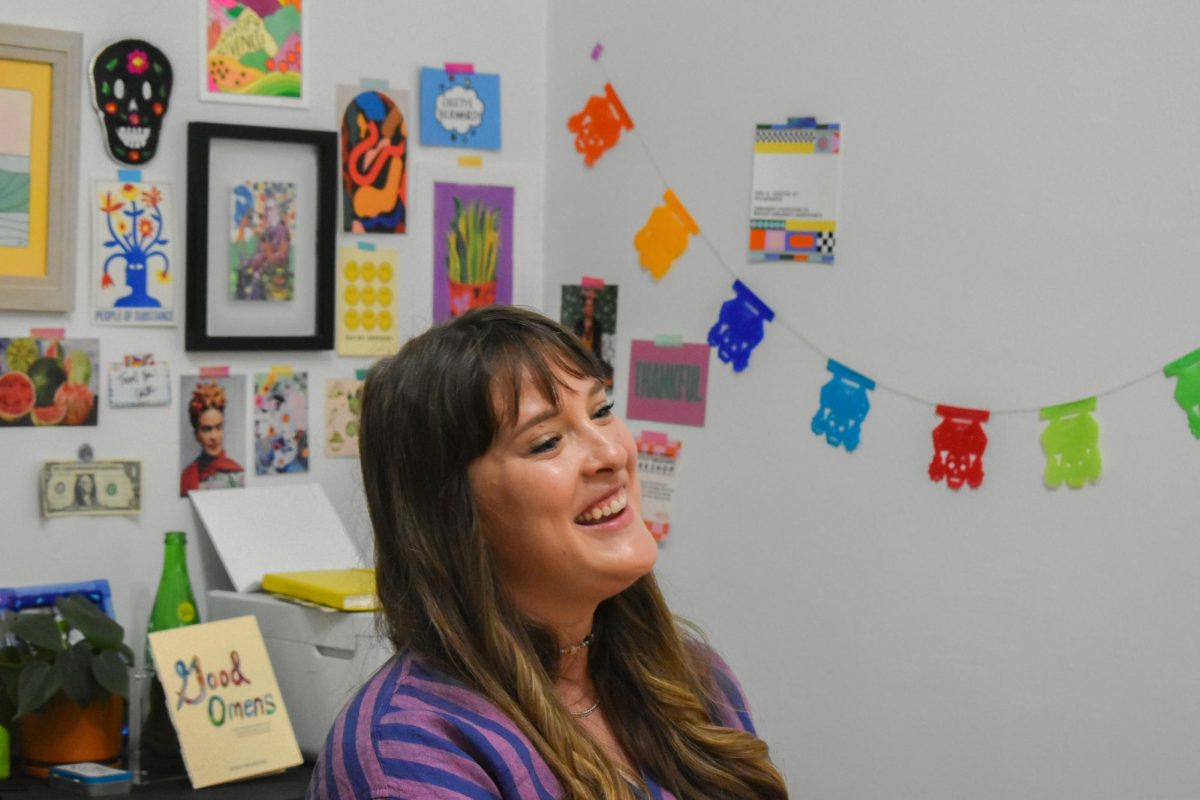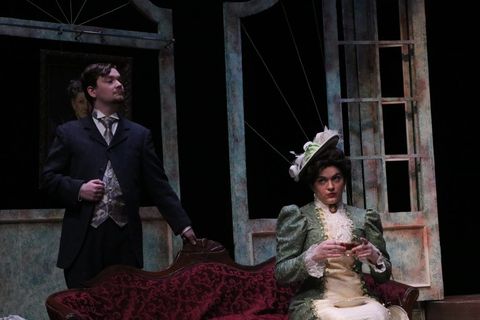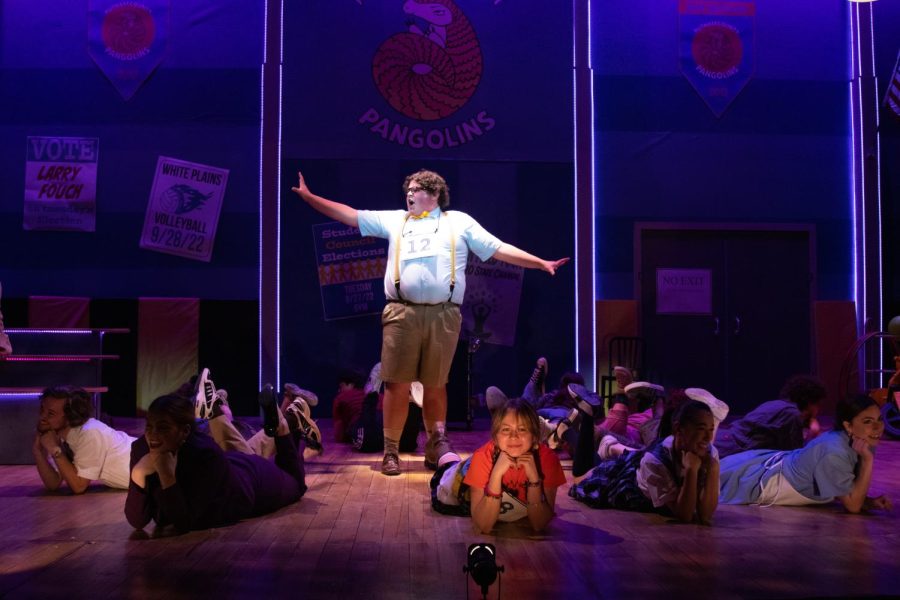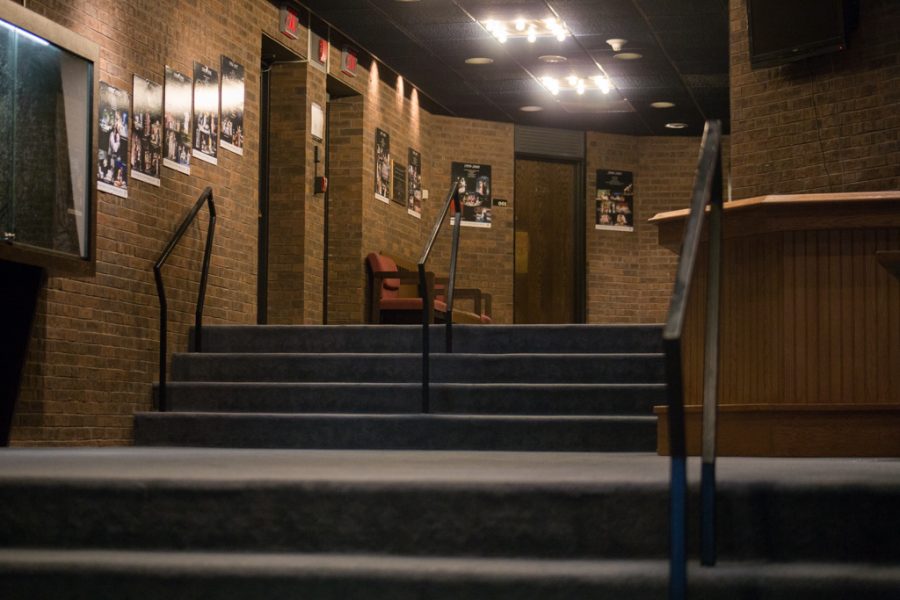
“Sunday in the Park with George” is a lot like the art form it spotlights: pointillism. You take a palette of concepts — obsessiveness, artistic brilliance, inability to connect with others, the nature of art and beauty itself — and you dab them onto a canvas, dot by dot. If you just look at it, all you see is a smattering of concepts, separate and unordered. But if you take a step back and look at it, suddenly there’s a masterpiece in front of you that synthesizes these themes into something truly worthwhile.
A man and a woman are in a park together. They are lovers, but today they are yards apart, he on a folding stool, sketchbook in hand, and she standing rigid, looking out upon the waters of the Seine. She turns her head to speak, but he raises his hand quickly, a slide of two fingers moving her head back into position. Eventually, unable to take the strain of being an unappreciated model, she reaches two feet to her right, replaces herself with a cut-out image, and bursts into song.
Just another “Sunday in the Park with George.”
——–
“Sunday,” opening tonight at the Helfaer Theatre, is an award-winning musical by Stephen Sondheim and James Lapine. Sondheim, considered one of the greatest composers and lyricists, wrote the musical with Lapine in 1983, and while the play was snubbed at the Tony Awards, it went on to win the Pulitzer Prize for Drama in 1985 — one of only eight musicals to ever do so.
The musical tells two interwoven stories, with actors playing a different role in each act. In the first act, set in 1884, we get a fictionalized account of the life of Georges Seurat, the painter who invented the art of pointillism in his work “A Sunday Afternoon on the Island of La Grande Jatte,” the painting on which the musical is based.
In this act, Georges (played by Steven Wormley) is working on his famous painting, but struggling with both his efforts to earn critical acclaim for his art and his attempts to connect and find love with his model and muse, Dot (Danielle Scampini).
Scampini, a College of Communication senior, says it’s this attempt to find equilibrium that fuels the show and gives it purpose.
“The whole point of the show is to find that balance,” Scampini said.
That central theme can be seen in the second act as well, which opens casually with the cast members walking onstage and reassembling the recreation of “A Sunday Afternoon” that closes the first act. Frozen in place, they sing a quick eulogy to Georges, who died suddenly at age 31. Time then flashes forward 100 years, to the life of Georges’ fictionalized great-grandson, George.
George, an artist himself, is premiering his latest in a series of “Chromolumes,” machines that produce dynamic light shows. The Chromolumes were once brilliant achievements, much like his great-grandfather’s painting, but have grown stale over time. His struggle is not to find recognition or approval — he has plenty of that — but to find new inspiration.
The second act reinvents some of the themes of the first, making it an elaborate and unique counterpoint to the story of Georges Seurat.
College of Communication senior Jessica Orr, who plays Georges’ mother in the first act and a supportive critic in the second, said she sees the play, especially the second act, as a call to be true to yourself and do what you really love.
“If you’re constantly pleasing others, what’s in it for you?” Orr said.
College of Communication sophomore Allie Bonesho, who plays a rival artist’s wife in Act I and a museum board member in Act II, said she finds the relationship between Dot and Georges incredibly compelling in the first act.
“They don’t belong together,” said Bonesho, paraphrasing a song from the musical, “but they should have belonged together.”
And then there’s the question of Georges’ art itself. It’s an obsession, true, and it destroys his relationship with Dot — but it’s beautiful. Georges has a true gift: he can see a world beyond the world and make it real.
“Look,” Georges sings in the middle of the first act, “I made a hat — where there never was a hat.”
But should Georges have stopped painting and tried to devote himself to Dot instead of dots? Is a piece of art — any art — more important than human connection? And how much obsession is too much?
Those are exactly the sort of questions guest director Tony Clements wants us asking.
“Sondheim’s not easy,” Clements said. He said he believes those sorts of questions are things he and the cast shouldn’t, and won’t, explicitly spell out onstage.
“(As actors), we need to know, but we don’t need to tell you,” Clements said.
——–
Clements, originally from Waterford, Wis., began his career as an actor late, after eight years of singing for a wedding band. He’d acted in high school however, and eventually began performing in community theaters in the Milwaukee area.
From there, he started acting part-time, and then began to make the job less-and-less part-time until he finally became a full-time actor in 1995. He ended up becoming a part of the “Mamma Mia” touring cast, and stayed with that show for four years. Shortly after, he decided to try his hand at directing as well, and has been doing both ever since.
It sounds planned and orchestrated in retrospect, but Clements said he never planned to be an actor or a director — it just happened.
“Don’t even ask me what I’ll be doing in 10 years,” he said.
Right now, Clements is trying to live in the present, and the present is “Sunday.” It’s not a particularly easy present.
“(‘Sunday’) is incredibly rich and incredibly full — and incredibly difficult,” Clement said. “It’s one of the most difficult musicals around.”
Part of that has to do with Sondheim’s musical style (showcased most recently in 2007 movie musical “Sweeney Todd”) which is filled with irregular rhythms that pattern regular speech and challenging, sometimes dissonant, notes and chords.
In “Sunday,” Sondheim’s music is further complicated because of its structure. Paralleling Georges’ work itself, the music and orchestration utilizes frequent staccato notes, dots of sound which occasionally beat in time with Georges’ painting.
—–
But in a play about art, set design is a critical component as well. Appropriately, color and light, key elements of both Georges’ works, are integral to the play’s design.
First of all, there’s the backdrop, a blank screen onto which images are projected from behind. These images set the stage in both acts, creating the park, Georges’ studio, the museum and the Chromolume show itself.
However, there’s also the painting, “A Sunday Afternoon on the Island of La Grande Jatte,” itself. Printed in reverse on a scrim, thin, see-through fabric, the painting is hung in Georges’ studio, and lit so Georges can be seen painting the canvas through the canvas itself. It’s a brilliant move, giving us a visual image of both the artwork and its artist at work.
It seems fitting that a musical about a painting should be so well-crafted and artistic in its own right. It’s a reminder, somewhat, that art can be anything — from paintings to light shows and from a performance on stage to words on a page.
“We don’t stop to realize that those people on the grass … that’s beautiful,” Bonesho said. “That’s art.”
And, as George notes in his very first and very last lines, that painting — like this play, like its songs, and even like these very words — all began with one simple color.
“White. A blank page or canvas. … So many possibilities.”
“Sunday in the Park with George” will be playing at the Helfaer Theatre April 15 to 18 and 21 to 25. Evening shows start at 7:30 p.m. and Sunday matinees start at 2:30 p.m. Tickets are $11 for students, $17 for university employees, alumni, and senior citizens, and $21 for adults. Tickets will be only $6 for all seats on Wednesday, April 21. “Date Night,” April 22, offers two tickets for $12.


